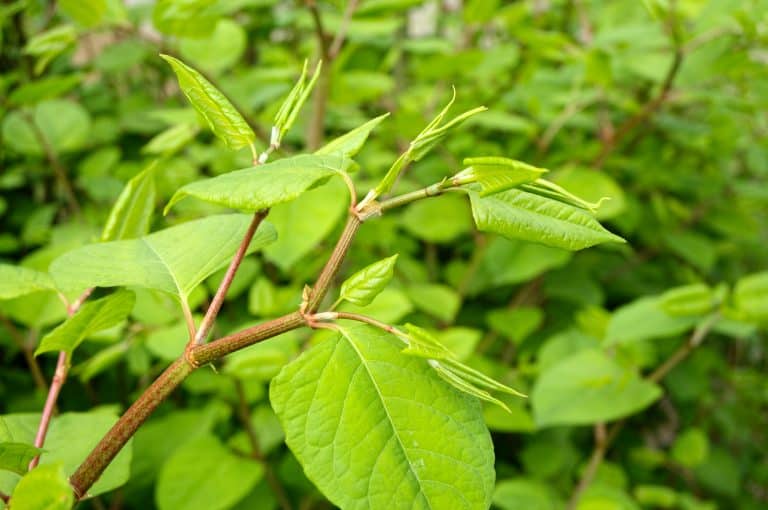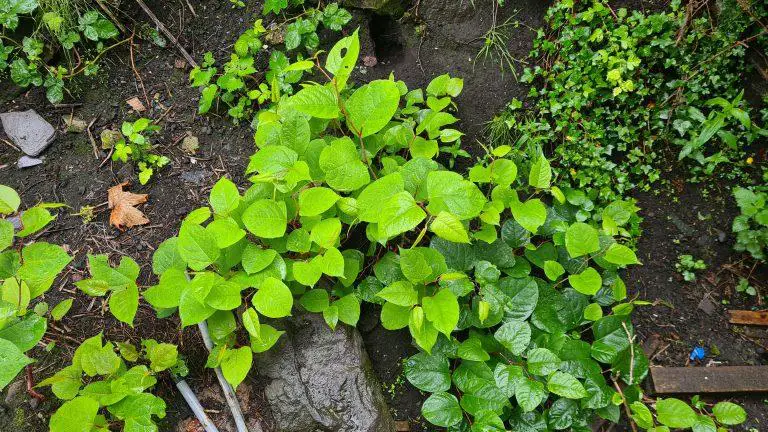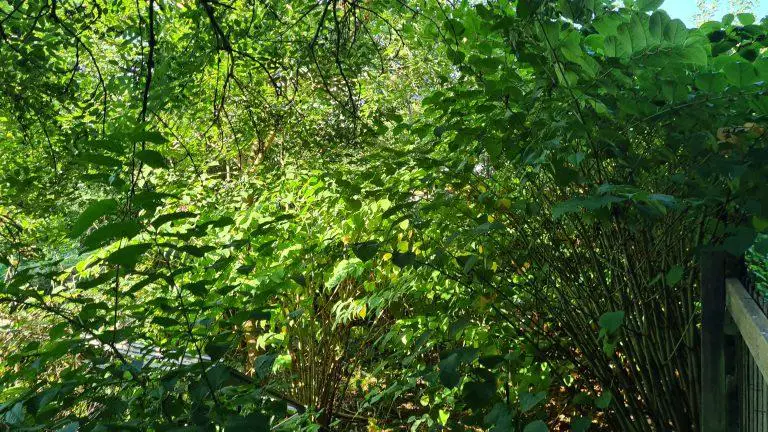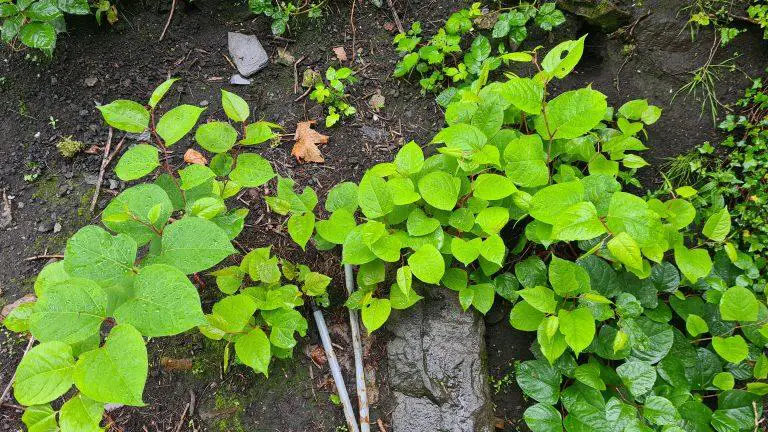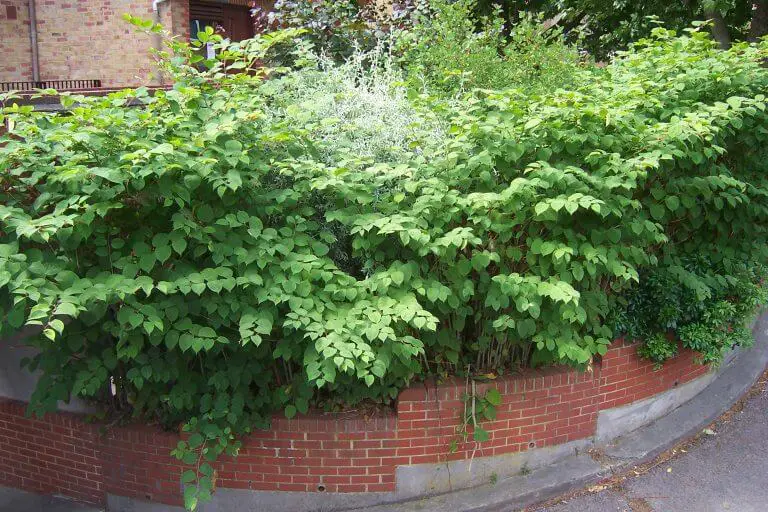It’s that time of year again when the growing season for Japanese knotweed comes to an end and the plant dies away, but you may not know that the weed is still alive and well, preparing to emerge bigger and stronger with new branches ahead of next March.
However, identifying Japanese knotweed in winter can become a challenge and more so if you wish to begin treating it, in order to remove it before the following year comes.
What happens to Japanese knotweed in winter?
Japanese knotweed canes die off in late autumn and early winter, causing the plant to go dormant. The leaves on the canes fall off and the canes turn yellow, then brown.
The canes are hollow, dark brown and brittle and they collapse upon one another. If the area hasn’t been treated, often previous year’s decomposition can be seen underneath.
The canes remain standing throughout the winter and can often still be seen amongst new stands in the following spring and summer. They turn a dark reddish/brown colour and become brittle to the touch.
Dead canes can take up to three years to decay. The dead canes will typically litter the ground as they decompose, reducing competition from native species.
Does Japanese knotweed die off in the winter?
The short answer is no.
Japanese Knotweed is hardy, tough and near-impossible to kill, which makes it incredibly difficult to control in a garden or on land where you don’t want it because you can’t actually get rid of it.
Japanese knotweed is able to survive extremely cold conditions and with its roots, so deep in the ground, it knows how to protect itself.
It does die back above the surface in the winter though, which can give homeowners a false sense of hope that they might be rid of their knotweed problem. However, like many plants and perennials that die back in the winter months, it will begin to shoot again in the Spring.
If you leave it any longer then not only are you likely to find that you’re going to have to take more extreme measures such as excavation, but it’ll come back faster and stronger than before. So don’t delay, get on top of your knotweed problem now – the longer you leave it, the worse it’s going to get!
How to identify Japanese knotweed in winter
The above-ground signs can be difficult to detect, particularly if the infestation is tiny and the stems are readily broken and flattened. When the temperature continues to be mild and the region is sheltered, Japanese knotweed can bloom in the winter, but this is an uncommon occurrence thankfully.
Larger stems, on the other hand, can be highly visible and large, with hordes of Japanese knotweed winter canes firmly standing against the wind and rain.
Winter Japanese knotweed stands in urban areas, on the other hand, are rarely beautiful — imagine a mix of fallen and decaying leaves, as well as wind-blown and fly-tipped trash gathered around and among the knotweed canes – not so nice.
Rural Japanese knotweed infestations may contain less garbage, but they can be an environmental disaster, wreaking havoc on local ecosystems and causing riverbank erosion.
Winter floods may even encourage the spread of Japanese knotweed by transporting rhizome fragments downstream to new places.
Is Japanese knotweed visible in winter?
When attempting to identify Japanese Knotweed in the winter, keep the following in mind:
- Brown canes that are at various stages of decomposition
- Hollow canes that collapse and intertwine on top of one another
- Underneath the fresh growth, you’ll frequently uncover canes from prior years, each at a distinct degree of decomposition.
- Japanese Knotweed shoots beneath the disintegrating leaf for the next season
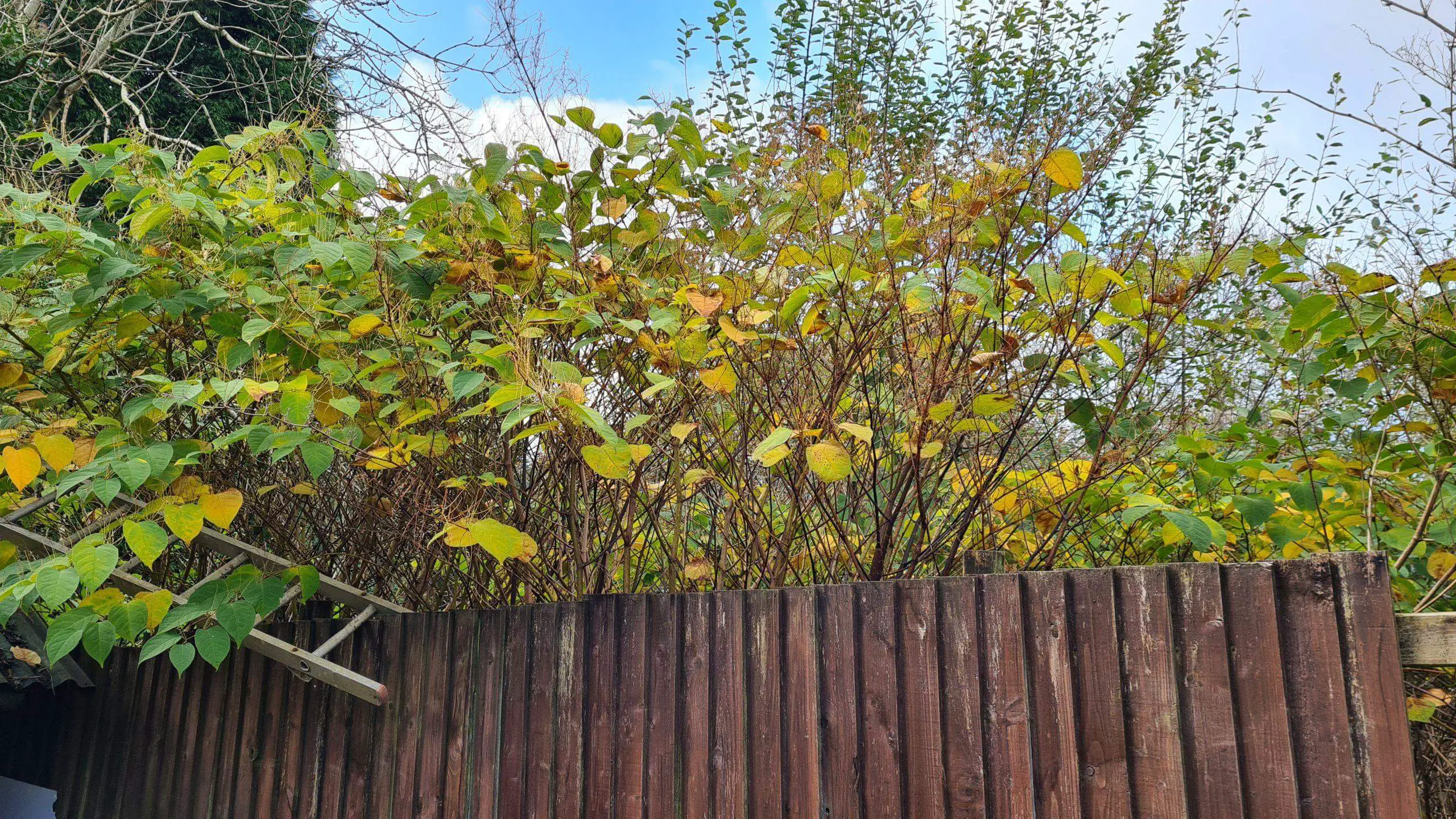
Visual identification of Japanese knotweed in winter
The up-close approach is perhaps the greatest means of identifying Japanese knotweed in the winter. The zigzagging stems, the brittle and hollow brown canes that resemble dark bamboo canes, and the crumbly remains of the flower clusters will all be highlighted during an examination.
If you’re going to the trouble of physically identifying Japanese knotweed in the UK, be sure you’re not spreading the plant. Before continuing, make sure your boots are free of mud and vegetation, and inspect your clothing for knotweed bits, leaving whatever you discover where it came from.
Can you treat Japanese knotweed in winter?
Even after your own efforts at treating it through cutting the plant back or burning it has been successful, there is still a strong likelihood of it returning. How? Like many plants, the rhizome system beneath the ground is healthy and lying dormant throughout the colder winter months and regrows as soon as spring comes around.
Be vigilant for this weed during winter
When inspecting houses during the winter months, homebuyers should be especially cautious, as property owners may have taken advantage of the plant’s apparent demise to disguise it.
The crown is often visible in the ground after the canes have been removed, or in severe circumstances, membranes are spread horizontally in the ground to disguise the knotweed, with a walkway or grass laid over it.
If Japanese knotweed is visible, a surveyor should be able to detect it; nonetheless, purposeful concealment is forbidden, and sellers must answer truthfully to the direct question concerning Japanese knotweed on the TA6 Property Information Form, which must be completed during every property transaction.
If a seller is dishonest or pretends not to know about the presence of knotweed, the buyer may be able to sue for misrepresentation and be paid the cost of professional treatment, legal fees, and any decline in the property’s value.
The collection of images below will help with the identification of Japanese Knotweed in winter.
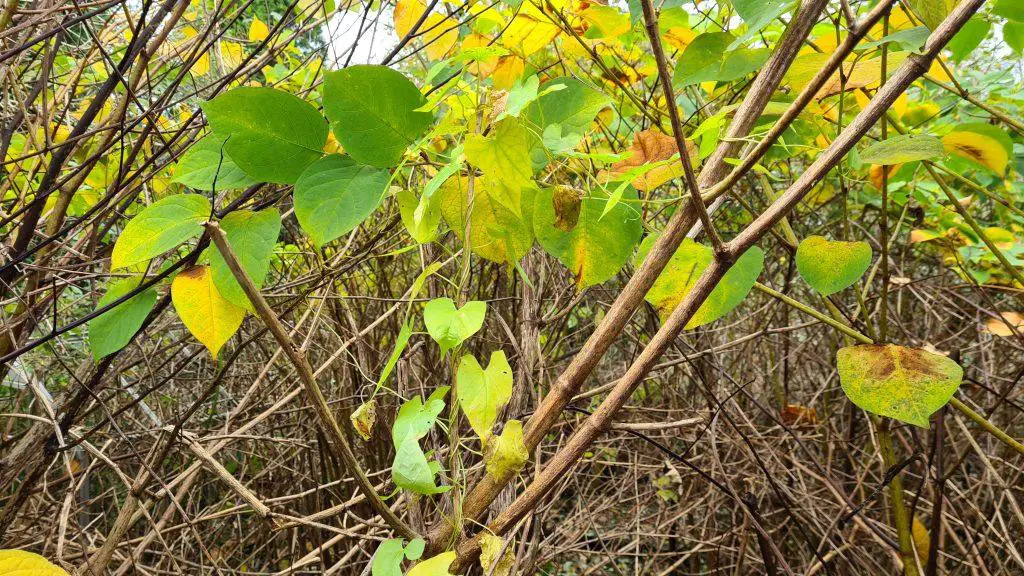

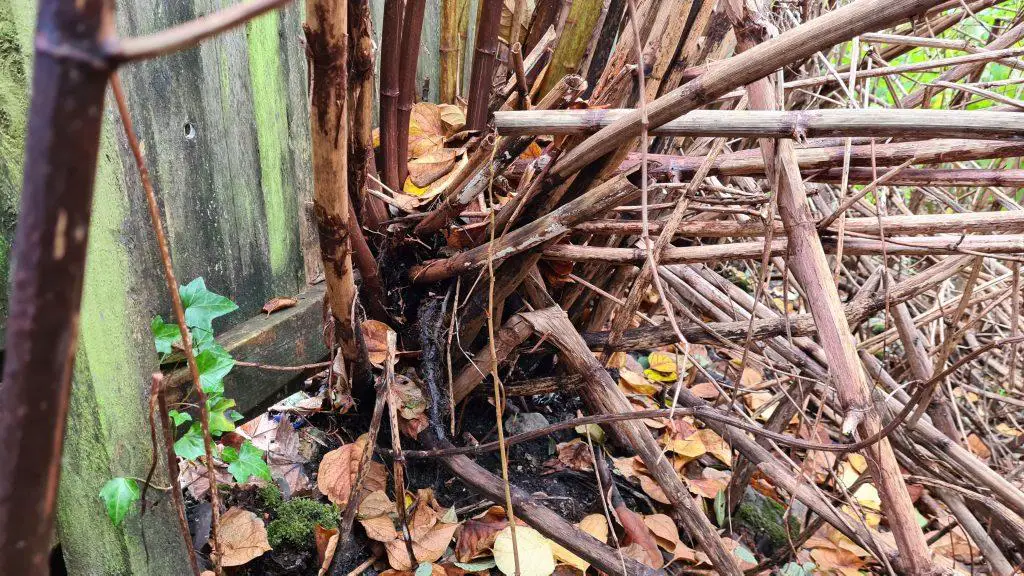
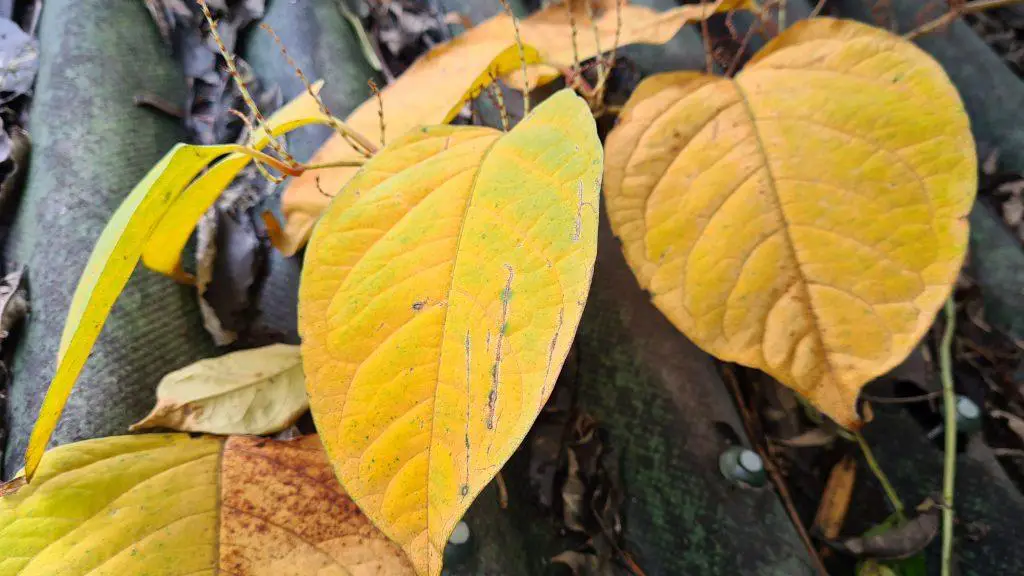
Treatment of Japanese knotweed in winter
Herbicide treatments cannot be used during winter as they require the plant to be in leaf, but that doesn’t mean treatment needs to be postponed until spring.
In fact, Japanese knotweed can be dug out at any time of year using environmentally friendly methods, such as digging out the rhizome roots and sifting out every viable piece before returning the clean soil to the ground.
After this, an insurance-backed guarantee can then be secured for the treatment which will ensure the property can be bought or sold without difficulty.
Want to know more about identifying Japanese knotweed in Winter?
Knotweed Removal aims to provide the most up-to-date information, help and advice for YOU to make informed decisions. If you are unsure or uncertain about how to proceed, please reach out to us and we will gladly come back and advise you as best we can.
Governmental advice can be found here and the UK law covering the removal of Japanese Knotweed as stated under the Wildlife and Countryside Act 1981 can be found here.
The best means to contact us is via our email – hello@knotweedremoval.tips
Do not forget we have a library of blogs covering many areas relevant to Japanese Knotweed, our free downloadable How-to Guides and Product Reviews on the latest methods being employed to eradicate or remove Japanese Knotweed.
Knotweed Removal, UK

